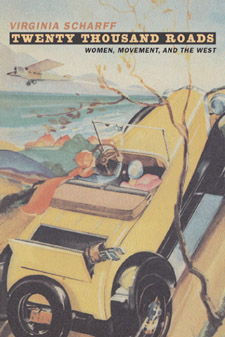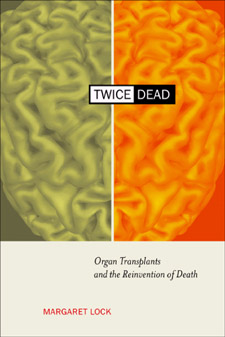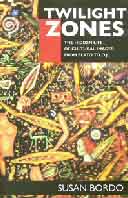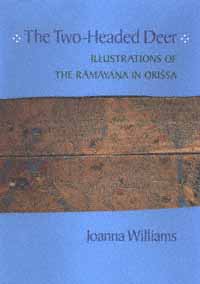formerly eScholarship Editions


|
|
|
|
Browse by Title
All Titles | Public Titles
A | B | C | D | E | F | G | H | I | J | K | L | M | N | O | P | Q | R | S | T | U | V | W | Y | Z | OTHERYour request for titles beginning with T found 85 book(s). | Modify Search | Displaying 81 - 85 of 85 book(s) | |
| 81. |  | Title: Twenty thousand roads: women, movement, and the West Author: Scharff, Virginia Published: University of California Press, 2002 Subjects: History | Women's Studies | California and the West Publisher's Description: From Sacagawea's travels with Lewis and Clark to rock groupie Pamela Des Barres's California trips, women have moved across the American West with profound consequences for the people and places they encounter. Virginia Scharff revisits a grand theme of United States history - our restless, relentless westward movement--but sets out in new directions, following women's trails from the early nineteenth to the late twentieth centuries. In colorful, spirited stories, she weaves a lyrical reconsideration of the processes that created, gave meaning to, and ultimately shattered the West. Twenty Thousand Roads introduces a cast of women mapping the world on their own terms, often crossing political and cultural boundaries defined by male-dominated institutions and perceptions. Scharff examines the faint traces left by Sacagawea and revisits Susan Magoffin's famed honeymoon journey down the Santa Fe Trail. We also meet educated women like historian Grace Hebard and government extension agent Fabiola Cabeza de Baca, who mapped the West with different voyages and visions. Scharff introduces women whose lives gave shape to the forces of gender, race, region, and modernity; participants in exploration, war, politics, empire, and struggles for social justice; and movers and shakers of everyday family life. This book powerfully and poetically shows us that to understand the American West, we must examine the lives of women who both built and resisted American expansion. Scharff remaps western history as she reveals how moving women have shaped our past, present, and future. [brief] Similar Items |
| 82. |  | Title: Twice dead: organ transplants and the reinvention of death Author: Lock, Margaret M Published: University of California Press, 2001 Subjects: Anthropology | Medical Anthropology | Cultural Anthropology | Ethics | Sociology | Sociology | Ethics | Sociology | Ethnic Studies | Ethnic Studies Publisher's Description: Tales about organ transplants appear in mythology and folk stories, and surface in documents from medieval times, but only during the past twenty years has medical knowledge and technology been sufficiently advanced for surgeons to perform thousands of transplants each year. In the majority of cases individuals diagnosed as "brain dead" are the source of the organs without which transplants could not take place. In this compelling and provocative examination, Margaret Lock traces the discourse over the past thirty years that contributed to the locating of a new criterion of death in the brain, and its routinization in clinical practice in North America. She compares this situation with that in Japan where, despite the availability of the necessary technology and expertise, brain death was legally recognized only in 1997, and then under limited and contested circumstances. Twice Dead explores the cultural, historical, political, and clinical reasons for the ready acceptance of the new criterion of death in North America and its rejection, until recently, in Japan, with the result that organ transplantation has been severely restricted in that country. This incisive and timely discussion demonstrates that death is not self-evident, that the space between life and death is historically and culturally constructed, fluid, multiple, and open to dispute. In addition to an analysis of that professional literature on and popular representations of the subject, Lock draws on extensive interviews conducted over ten years with physicians working in intensive care units, transplant surgeons, organ recipients, donor families, members of the general public in both Japan and North America, and political activists in Japan opposed to the recognition of brain death. By showing that death can never be understood merely as a biological event, and that cultural, medical, legal, and political dimensions are inevitably implicated in the invention of brain death, Twice Dead confronts one of the most troubling questions of our era. [brief] Similar Items |
| 83. |  | Title: Twilight zones: the hidden life of cultural images from Plato to O.J Author: Bordo, Susan 1947- Published: University of California Press, 1997 Subjects: Sociology | Popular Culture | Politics | Social and Political Thought | Gender Studies | Media Studies Publisher's Description: Considering everything from Nike ads, emaciated models, and surgically altered breasts to the culture wars and the O.J. Simpson trial, Susan Bordo deciphers the hidden life of cultural images and the impact they have on our lives. She builds on the provocative themes introduced in her acclaimed work Unbearable Weight - which explores the social and political underpinnings of women's obsession with bodily image - to offer a singularly readable and perceptive interpretation of our image-saturated culture. As it becomes increasingly difficult to distinguish between appearance and reality, she argues, we need to rehabilitate the notion that not all versions of reality are equally trustworthy. Bordo writes with deep compassion, unnerving honesty, and bracing intelligence. Looking to the body and bodily practices as a concrete arena where cultural fantasies and anxieties are played out, she examines the mystique and the reality of empowerment through cosmetic surgery. Her brilliant discussion of sexual harassment reflects on the Clarence Thomas/Anita Hill controversy as well as the film Disclosure . She suggests that sexuality, although one of the mediums of harassment, is not its essence, and she calls for the recasting of harassers as bullies rather than sex fiends. Bordo also challenges the continuing marginalization of feminist thought, in particular the failure to read feminist work as cultural criticism. Finally, in a powerful and moving essay called "Missing Kitchens" - written in collaboration with her two sisters - Bordo explores notions of bodies, place, and space through a recreation of the topographies of her childhood. Throughout these essays, Bordo avoids dogma and easy caricature. Consistently, and on many levels, she demonstrates the profound relationship between our lives and our theories, our feelings and our thoughts. [brief] Similar Items |
| 84. |  | Title: Two churches: England and Italy in the thirteenth century Author: Brentano, Robert 1926- Published: University of California Press, 1988 Subjects: History | European History | Medieval History | Medieval Studies | Religion Similar Items |
| 85. |  | Title: The two-headed deer: illustrations of the Rāmāyaṇa in Orissa Author: Williams, Joanna Gottfried 1939- Published: University of California Press, 1996 Subjects: Art | Art History | South Asia Publisher's Description: India's epic poem, the Ramayana, is a dramatic, ever-evolving tale of a prince and his bride, their adventures and dilemmas, and demons. Joanna Williams studies the art of the Ramayana in Orissa, a region known for its elegantly carved temples. There she researched both literary and visual art works, interviewed artists, and observed them at work.With depth and originality, Williams considers how Indian art tells a story in distinctive ways. Her narratological study takes into account many familiar genres of visual art: illustrated manuscripts, drawings on palm leaf paper, wall paintings, shadow plays, temple sculpture, and painted cloth pata . Included are discussions of pan-Indian versions of the epic, which include film, video, and the comic strip; and those local to Orissa, including rural theater and festivals.Noting that we often treat images designed to be seen in sequence as separate pictures, Williams argues that considering several Ramayana images in sequence reveals their qualities of variety, surprise, and emotional development, promoting an understanding of how the story is told. She discusses the artists' narrative strategies and offers interpretations of how and why artists made their choices.Williams persuasively argues against critics who believe that Indian art, indeed any traditional art, is conventional and lacks individual technique or vision. Her analysis across a variety of genres offers a new model for art historians; at the same time anthropologists, folklorists, and scholars of literature and narratology will find her work of great value. [brief] Similar Items |